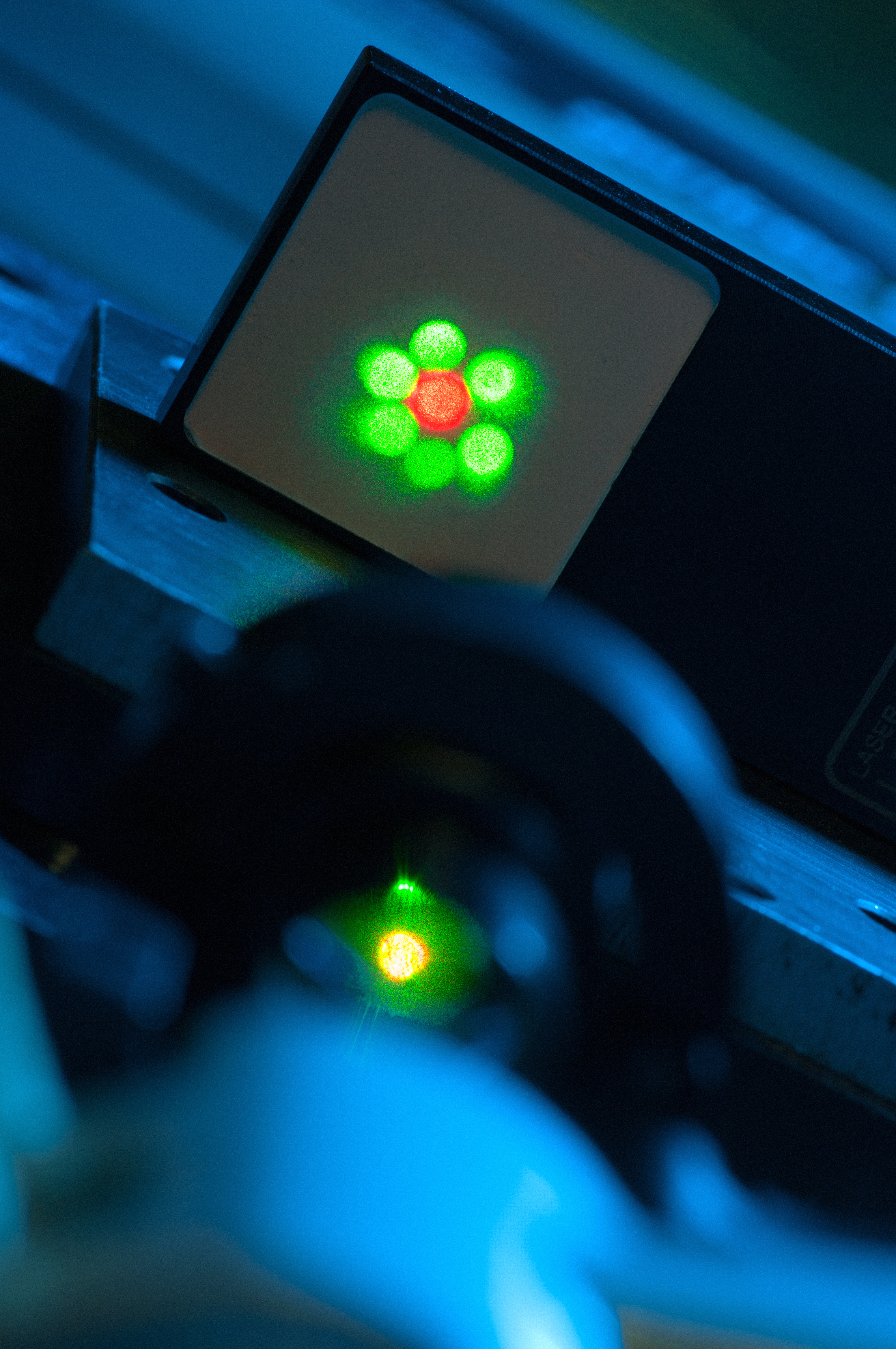Laser medicine is perhaps the best-known among medical photonic applications since the laser comes into direct contact with the individual patient. Subjects such as LASIK, retinal coagulation, photodynamic therapy as well as wrinkle and tattoo removal are well known to the general public and are widely used as therapeutic approaches.
Laser-beam methods are suitable for separating and ablating all types of materials. This also applies to biological “materials,” such as soft and hard tissue. In particular, ultra-short pulse lasers are ideal tools for cutting tissue while causing only minimal thermal damage so that surgeons can perform bone resections or remove tumors. Fraunhofer ILT is developing various technological approaches and systems for surgery and minimally invasive therapy.
In thermal laser therapy, for example, research is currently examining solutions for site-selective coagulation with laser irradiation. For this, a minimally invasive approach using diode lasers and solid-state lasers is used to destroy cancerous tissue. To avoid unwanted tissue degeneration, Fraunhofer ILT is investigating methods for non-contact temperature detection with a time resolution < 10 ms. The treatment can be monitored with optical-spectroscopic measurements, as an addition, in order to analyze the coagulation state of the tissue. If the laser beam source is configured in such a way that laser radiation is emitted with two differently absorbed wavelengths and the radiation coupled into a treatment fiber, the optical penetration depth can be adapted dynamically during treatment.
For new therapeutic approaches, the institute is investigating the production of laterally radiating laser fibers in which the laser power can be distributed evenly over a distance of a few centimeters in hollow organs. Here, micro perforations in balloon catheters allow the dosage of medication to be administered accurately.
Furthermore, lasers and plasma-based processes are also used in a variety of applications to produce medical devices. The spectrum here extends from additive processes with which implants can be tailored for a patient right up to cutting and welding processes with which stents are generated and, for example, components of heart pacemakers are joined together.
By means of plasma and laser technology, biofunctional coatings can be applied to surfaces or, specifically, changes generated in the surface properties, for example, to increase the compatibility for the biological environment (biocompatibility) of implants. The treatment of medical devices with low-energy electrons has also proven to be an effective tool to reduce pathogens on or to sterilize packaging, implants and medical devices as well as to inactivate liquid exciter suspensions. In the group’s institutes special biological labs are available to test the treated surfaces directly for their biocompatibility, antibacterial properties and their degree of sterilization.

